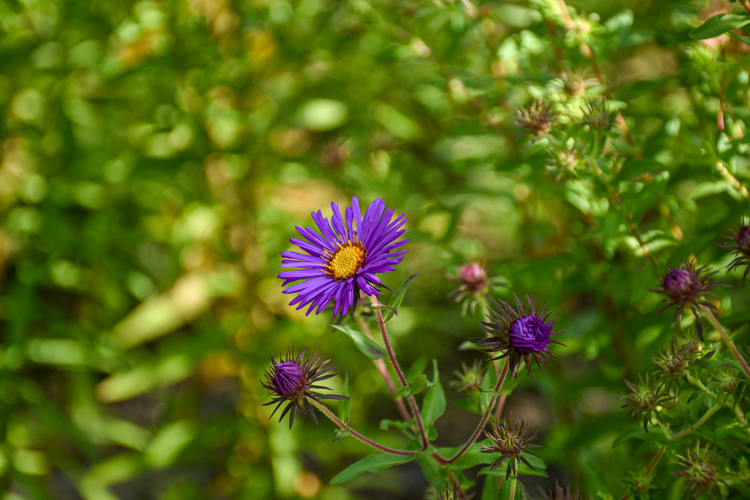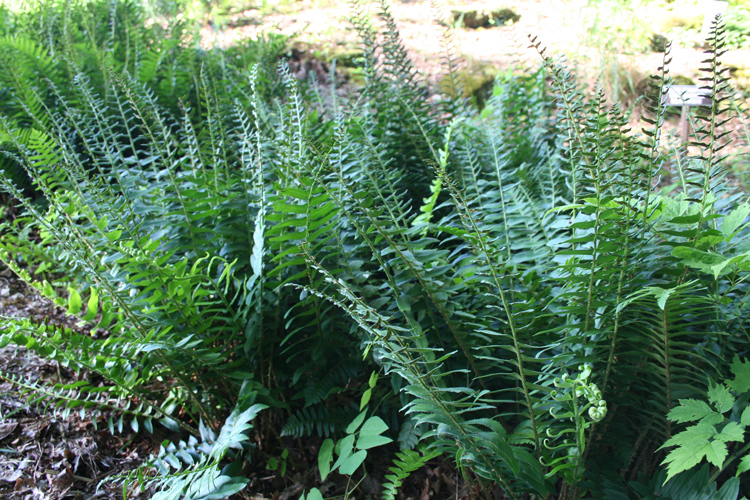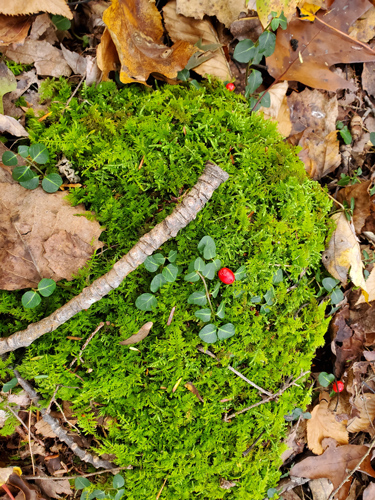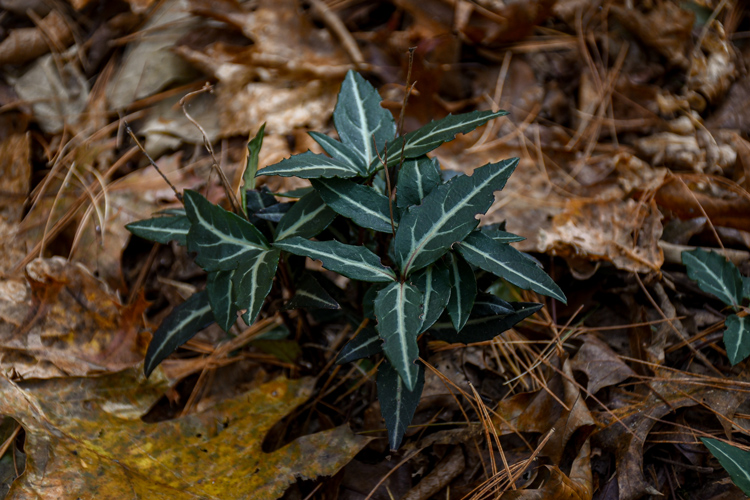By Leslie Duthie, New England Botanic Garden Volunteer
November 2023
Fall is my favorite time of the year. The mornings are cool and crisp, and afternoons are warm and usually pretty sunny. Although the days are getting shorter, the gardens are still full of flowers and fruit is beginning to ripen — not specifically for humans, but for all the wildlife that visit the garden. There’s no better way to observe seasonal change than in a garden. I’ve been volunteering at New England Botanic Garden a few times a week since 2018, and I take the time to notice lots of change. My eyes are often on our native plants.
In fall there are over 60 species of native asters and 40 species of native goldenrod to be found in New England. The variety of color, growth habit, and flower arrangement is pretty amazing. Some of the most prominent native species found at the Garden include New England aster (Symphyotrichum novae-angliae), purple stem aster (S. puniceum), New York aster (S. novi-belgii), and wood aster (Eurybia divaricata). In goldenrods you find two that are common and tend to be aggressive spreaders, Canada goldenrod (Solidago canadensis) and rough goldenrod (S. rugosa,) — these are best left in the meadows. Others like silverrod (S. bicolor), zig-zag goldenrod (S. flexicaulis), and wand goldenrod (S. puberula) do well in garden settings. Asters and goldenrods are some of the last blooms we see in the garden, and many have only just begun to fade.
I was walking in the woodland areas around the gardens the other day and came across some great plants growing naturally here. I found evergreen fern or fancy fern (Dryopteris intermedia) growing in a patch larger than I have ever seen in the wild. It was amazing, shining in the woodlands with very finely dissected, glossy, dark green fronds (or leaves) just carpeting the forest floor. I was stunned by its abundance in the woodland, but more so by its beauty among the trees and fallen logs. Growing among the evergreen fern I found other fern species like Christmas fern (Polystichum acrostichoides) and lady fern (Athyrium angustum), and I know through much of the forest here, you can find marginal wood fern (Dryopteris marginalis) as well. I came across cucumber root (Medeola virginiana) in its full fall glory with large, deep blue berries borne in clusters atop the plant. When in fruit, the upper whorl of leaves shows a beautiful deep red color that matches the stalks of those blue berries.
Along the wooded trails this time of year you can find other natives like partridge berry (Mitchella repens), a creeping ground cover with showy red berries and a white mid-rib on the leaf. Spotted wintergreen (Chimaphila maculata) also has a white stripe, more like a large swath of white along the evergreen leaf of the plant. Spotted wintergreen is another spreading plant that flowers in mid-summer. In fall, you often see the dried seed capsules held above the leaves. One last treasure in the forest right now is the rattlesnake plantain (Goodyera pubescens), an orchid that hides just below newly fallen leaves. It has rich green leaves with fine white lines that produce an intricate pattern on the broad leaves.
Soon it will be winter, and although we don’t often consider it, winter is a good time for forest observation as well. Noticing the distinctive bark on our forest trees and shrubs is easier with fewer leaves around. Shagbark hickory (Carya ovata) stands out in the forests. Within the gardens, red twig and yellow twig dogwood cultivars (Cornus sericea) flash their bright red and yellow-ish stems. Fruits of winterberry holly (Ilex verticillata) hang on until later in winter when they are desirable for birds and wildlife. Then just about when we have given up on spring ever arriving, the vernal witch hazel (Hamamelis vernalis) springs into bloom in late February and early March, helping us get through those last cold months before spring actually arrives.
This focus on native plants comes for a reason. As beautiful as the cultivated plants can be, our native plant species evolved here with our native insect, bird, and wildlife populations. When I was young and moved to central Massachusetts, many of the native plant species I enjoy so much at the Garden were plentiful in woodlands. But like everything, they seem to be disappearing with development, climate change, and increased use of smaller and smaller open spaces.
As we look to the new gardening season to come in the year ahead, we can reverse this trend and support biodiversity by adding these lovely native plants to our own ecosystems and providing respite for a few more species.
About the Author
Leslie Duthie worked as a horticulturist growing, planting, and caring for native plants for over 40 years. Now retired, she enjoys all kinds of gardening. Volunteering at NEBG, Leslie cares for its historic apple orchard. She also serves as a board member of the Ecological Landscape Alliance, an organization educating people about ecological gardening practices.




